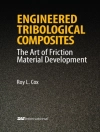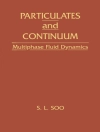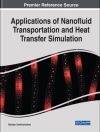This monograph details spatial and material vistas on non-linear continuum mechanics in a dissipation-consistent approach. Thereby, the spatial vista renders the common approach to nonlinear continuum mechanics and corresponding spatial forces, whereas the material vista elaborates on configurational mechanics and corresponding material or rather configurational forces. Fundamental to configurational mechanics is the concept of force. In analytical mechanics, force is a derived object that is power conjugate to changes of generalised coordinates. For a continuum body, these are typically the spatial positions of its continuum points. However, if in agreement with the second law, continuum points, e.g. on the boundary, may also change their material positions. Configurational forces are then power conjugate to these configurational changes. A paradigm is a crack tip, i.e. a singular part of the boundary changing its position during crack propagation, with the relatedconfigurational force, typically the J-integral, driving its evolution, thereby consuming power, typically expressed as the energy release rate. Taken together, configurational mechanics is an unconventional branch of continuum physics rationalising and unifying the tendency of a continuum body to change its material configuration. It is thus the ideal formulation to tackle sophisticated problems in continuum defect mechanics. Configurational mechanics is entirely free of restrictions regarding geometrical and constitutive nonlinearities and offers an accompanying versatile computational approach to continuum defect mechanics. In this monograph, I present a detailed summary account of my approach towards configurational mechanics, thereby fostering my view that configurational forces are indeed dissipation-consistent to configurational changes.
Tabla de materias
1 Introduction.- 2 Kinematics in Bulk Volumes.- 3 Kinematics on Dimensionally Reduced Smooth Manifolds.- 4 Kinematics at Singular Sets.- 5 Generic Balances.- 6 Kinematical ‘Balances’*.- 7 Mechanical Balances.- 8 Consequences of Mechanical Balances.- 9 Virtual Work.- 10 Variational Setting.- 11 Thermo-Dynamical Balances.- 12 Consequences of Thermo-Dynamical Balances.- 13 Computational Setting.
Sobre el autor
Paul Steinmann is a full professor at FAU Erlangen-Nuernberg, where he is active since 2007, and co-director of the GCEC in Glasgow. He is a member of GACM, GAMM and EUROMECH and was member of the managing board of ECCOMAS, member of the IACM general council, and president of the DEKOMECH (German Committee for Mechanics), the adhering organisation to IUTAM. He supervises several doctoral and postdoctoral researchers in the fields of material modelling, multi-scale methods, multi-physics problems, non-standard continua, configurational-failure-fracture mechanics, biomechanics as well as general developments in finite element and discretisation methods.












